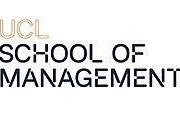The Evolution of Capitalism: Profit or Purpose?
HR Magazine, 26 January 2022
The Evolution of Capitalism
Profit or Purpose?
Adam Kingl
Is profit the fundamental criterion for a business? As capitalism is evolving under our feet, and that evolution is accelerating since Covid, we’re seeing a shift of emphasis from the pre-eminence of shareholders to stakeholders: customers, employees and communities. Now, I want to make a very important distinction. This does not mean that shareholders are getting the short end of the stick in terms of reward. If companies refocus or even redefine how they add value to stakeholders, then shareholders are rewarded too.
At a macrolevel, this shift that we are just starting to observe is essentially a rebalance in corporate focus from outcomes to outputs. If we think of outcomes as share price and profit, we cannot deny that these are good things to have. But I can’t storm into the office and say that my focus today will be to maximise my share price. What am I supposed to DO?? A blinkered focus on share price creates drift away from the reasons a company was founded in the first place: to identify a market need and to serve customers brilliantly. Creating value for customers and serving them better are outputs that companies can rally behind, can guide whether to spend more time on activity A or activity B. My outputs will lead to the outcome of enhancing my bottom line. But the outcome is not my daily focus – this is a subtle but hugely important point.
Does this mean that the CEO would not want to earn a profit? Absolutely not. Business has to survive and thrive. Here’s the rub. Most businesses were founded on an idea of introducing an exciting product to the world, serving a previously undiscovered market need, bettering a community or creating employment opportunities. But then financial analysts’ opinions grew in importance to investors, with their use of various ratios that are useful shortcuts in assessing company health. However, we must remember that these shortcuts are only performance indicators for today; they do not assess if the business is closer to or farther from achieving its purpose, closer to or farther from achieving long-term or ‘moon shot’ objectives.
Chasing ratio optimization is a short-term game. Before one knows it, the purpose of the business is about tacitly, implicitly pleasing analysts. Making decisions toward long-term objectives takes a back seat, and sustained success can become much harder to achieve over time. Unfortunately, that’s exactly what happened on a massive scale. At an inflection point in the second half of the twentieth century, as analysts’ and shareholders’ voices became louder, the CFOs’ and Investor Relations’ departments began to dominate the c-suite conversations. CEOs’ compensations grew increasingly related to share price and less on customer value indicators. The focus on outputs dropped down the totem pole in terms of time and attention in favour of outcomes. One could argue that the Great Recession of 2007-09 was caused, or at least made much worse, by this shift in focus.
Companies that remain focused on their purpose are rewarded by investors and customers. Aggregate research has proven that such purpose-focused firms significantly outperform their rivals. The authors of the book, Firms of Endearment, explored those organisations who are in the top ten percent in relation to focusing on their purpose, community, customers and employees. Their research revealed that, over the decade ending in June 2006, these firms returned 1,025% to their shareholders, compared to 122% return on investment by the S&P 500 overall. Just to be clear, this study therefore quantified that purpose-driven organisations reward their investors better than the market average by a multiple of ten!
Separate research published in Organization Science reached a similar conclusion. Faculty from Harvard, Pennsylvania and Columbia Universities surveyed half a million employees across 429 firms. While these academics did not find correlation between purpose alone and financial performance, they proved that companies with strong purpose and high clarity from management exhibit stronger financial and stock market performance. The implication is that one condition of commercial success is that an organisation’s employees understand and believe in their collective purpose and have a clear path as to how that purpose will be achieved.
Perhaps our ultimate question is: Are purpose and profit a zero-sum game? Recent research indicates this is not necessarily so, and the two forces may even serve each other. A huge amount of dialogue has attempted to answer this question both in media and in conferences. The opinions are typically more definitive than one may guess and often resemble the sentiment: ‘The most successful companies, both in profitability and longevity, are the ones who recognise the absolute necessity of profits as well as the equally high necessity of having a purpose beyond shareholders’ wealth.’
Adam Kingl (adamkingl.com) is the author of Next Generation Leadership and is an Adjunct Lecturer at the UCL School of Management, where this theme of the evolution of capitalism is explored in the School’s executive education practice and notably in its Building Competitive Advantage through Sustainability course: https://www.mgmt.ucl.ac.uk/executive-education.
https://www.hrmagazine.co.uk/content/comment/the-evolution-of-capitalism-profit-or-purpose







